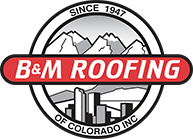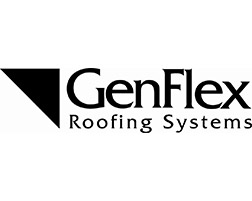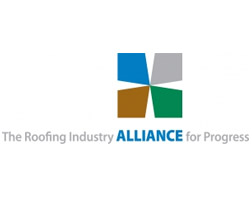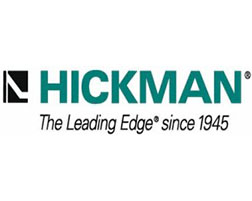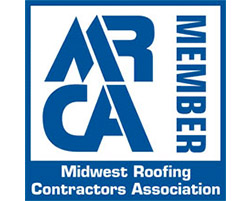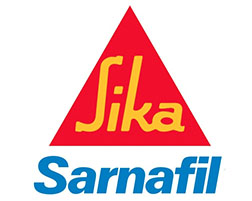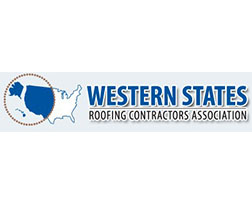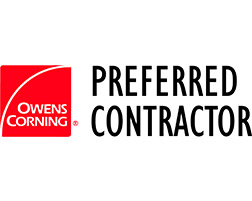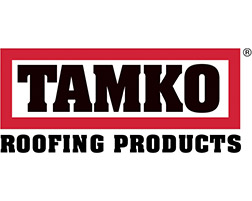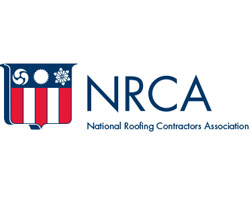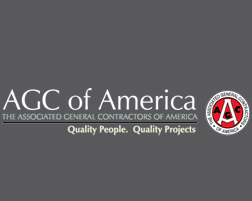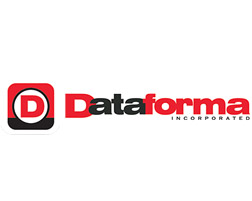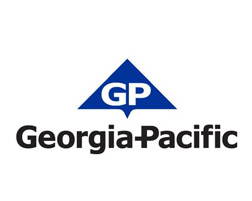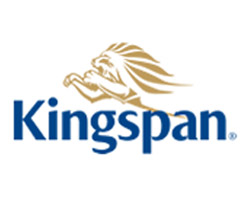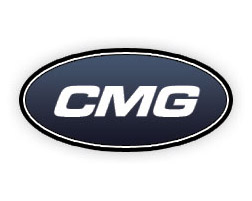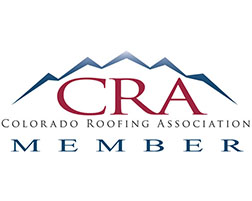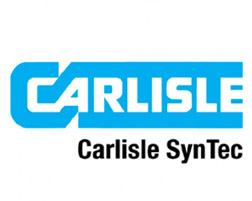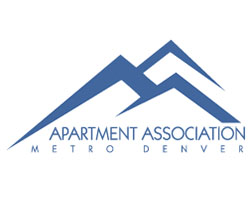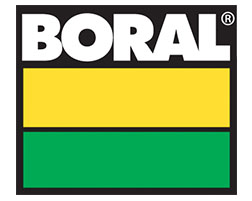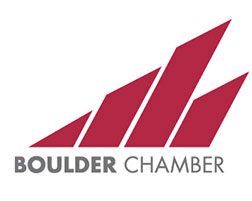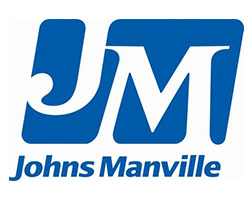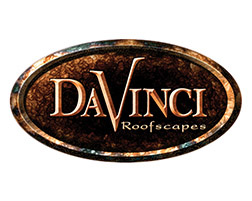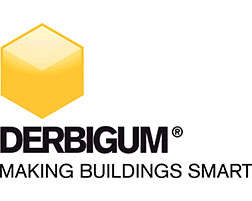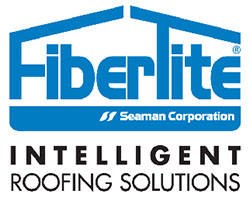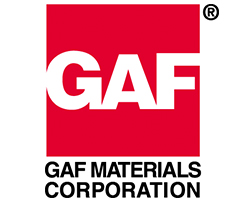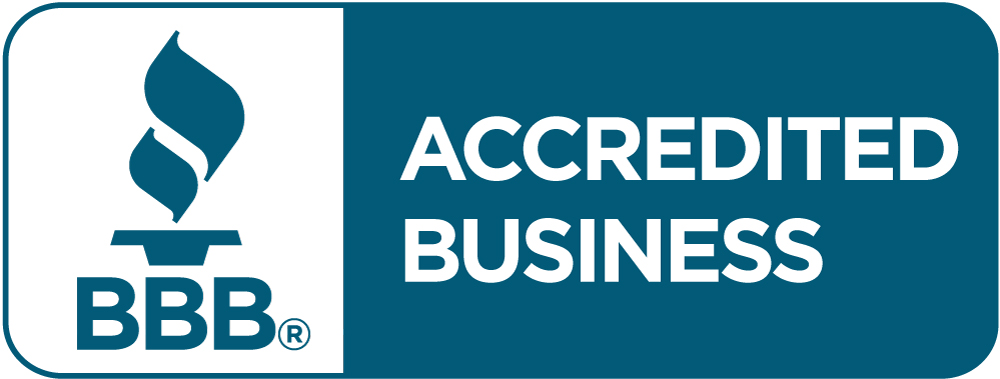Commercial Roofing Company Denver
The day will come when every Colorado business property will need to seek the services of a commercial roofing company in Denver. Maintaining roof integrity is essential to maintaining the health and wellness of your property’s tenants, reducing your carbon footprint by lowering energy costs, and protecting your capital investment.
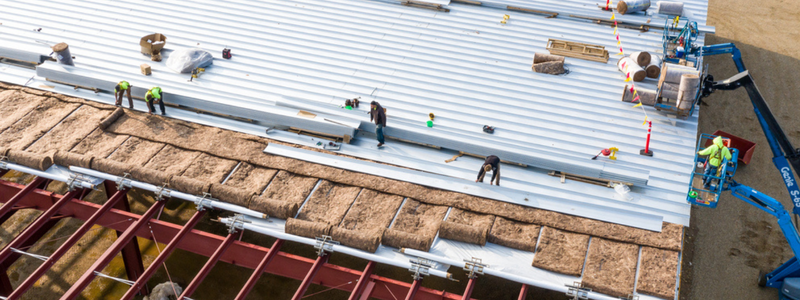
How Long Does a Commercial Property Roof Last in Denver?
Having a relationship with a commercial roofing company in Denver is essential to address any primary signs of roof problems quickly. A few early signs inside are leaks, watermarks, visible signs of wear, or mold.
Here are a few factors that may contribute to the degradation of the integrity of a commercial roof.
Weather
As a commercial roofing company in Denver, B&M Roofing understands the unique challenges we face in Colorado – dry, hot summers and icy-cold, snowy Rocky Mountain winters.
The hot summer sun can damage the sealant materials, which can crack or swell during the season-long heating cycle during the day and cooling at night.
Ice, in particular, can cause significant damage to a roof. It weighs 57.2 pounds per square foot, which is heavy enough to cause minor stress cracks and fissures. As it melts and turns back to a liquid, that water can drip into small gaps and later expand and refreeze, exacerbating the problem.
Roofing Materials
The type of roofing materials also weighs into the lifespan of your roof. As with a residential roof, which most are more familiar with, the material composition is critical to longevity.
For instance, commercial-grade asphalt shingles might last twenty to thirty years, while an architectural sheet metal roof could last between forty to fifty years.
Roof Pitch
The best commercial roofing company in Denver would also understand the significance of roof pitch to a longer-lasting structure. Many commercial property owners opt for a flat roof during the initial build-out to save money.
However, that option could be a mistake – water stands on the top, weakening the structure and contributing to leaks.
As a result, many commercial property owners around Denver now see the value in spending the extra money on a low-sloped roof. This small pitch gives enough movement to rainwater or melting snow or ice to evacuate the structure and minimize the damage.
Hiring the most experienced and best commercial roofing company in Denver, B&M Roofing, will help you learn all your options. Plus, they can help you determine the best options to maximize profits and safety when it’s time to repair, replace, or upgrade your building.
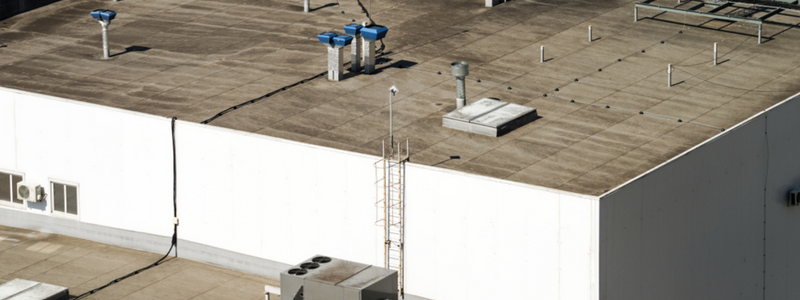
How to Select the Best Commercial Roofing Company in Denver
Because your building is a significant investment, you want to find the best commercial roofing company in Denver. Here are five factors to help you decide.
Review the Company’s Experience
Experience matters. Each job has unique challenges, and only the most experienced crews understand how to deal with problems that arise effectively and competently.
B&M Roofing has completed thousands of jobs at shopping centers, industrial facilities, and other commercial properties since 1947. We bring a breadth of know-how to your job.
Review the Company’s Reputation
At B&M Roofing, we have nothing to hide. We are transparent and gladly share customer testimonials from commercial property managers and residential clients. They rave about our professionalism, commitment to quality, and expertise. In fact, many refer their friends, family, and colleagues to us when they need help with a roof replacement – that is a true display of their confidence!
Please don’t take our word for it. Read our client testimonials for yourself.
Inquire About the Commercial Roofing Company’s Safety Standards
The best commercial roofing company in Denver will commit to job site safety to protect its employees and others around the area.
B&M Roofing creates a culture of employee safety that goes above and beyond industry standards. A few steps we take to protect our staff include these:
- Weekly “tool box talks,” a review of safety pitfalls and current OSHA regulations.
- Six-month safety meetings to keep safety compliance at the top of mind for all staff – both new and our most experienced team members attend these sessions.
- Fall protection training.
- New hire orientation to ensure new staffers are on the same page with the rest of our team before they step foot on a job site.
- Vehicle operations training to certify equipment operators meet or exceed all OSHA and Colorado DOT requirements.
Ask if the Commercial Roofing Company in Denver Holds the Appropriate Licensing
Each residential and commercial roofing company should hold a general contractor’s license and appropriate local business permitting to comply with Colorado law. If a company does not have these things, it is a clear sign of trouble.
These laws help to ensure the industry’s integrity and protect consumers from fraudulent companies who permeate the industry – here today, gone tomorrow. We have all heard these nightmare stories, and our company gladly reassures our clients that we stand against unscrupulous practices. B&M Roofing calls the Denver area home, and we fully comply with state and local laws wherever we operate.
Find Out if the Contractors Carry Insurance
Reputable commercial roofing contractors in Denver will carry general liability, vehicle, and workers’ compensation insurance. Avoid companies that skimp on insurance coverage. If they cut this corner, they are also open to cutting others.
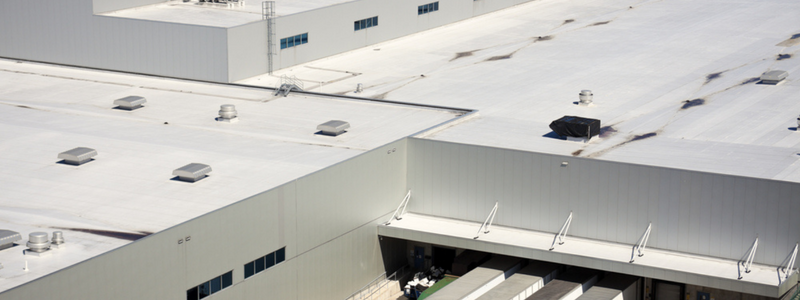
B&M Roofing Meets All the Standards to Qualify as the Best Commercial Roofing Company in Denver
If you’re looking for a commercial roofing company in Denver, B&M Roofing:
- Has over seventy years of service to commercial and residential property owners in Colorado.
- Understands all that must go into a high-quality, long-lasting, and beautiful roof.
- A renowned reputation for commitment to quality work.
- Thousands of testimonials from satisfied customers.
- Meets or exceeds all industry safety standards and OSHA requirements.
- Complies with all state and local licensing laws.
We service commercial (and residential) roofs in the following Colorado communities:
- Denver
- Colorado Springs
- Boulder
- Fort Collins
- Greeley
- Surrounding Front Range area
Please use our convenient online contact form if you do not see your community listed above. One of our professional customer service staff will respond to you promptly to discuss your needs.
Roof Replacement Colorado
Anyone looking for roof replacement in Colorado – homeowner or commercial building owner – likely has many questions before taking the leap. The pros at B&M Roofing have guided thousands of customers through the process.
Colorado property owners face unique challenges, like scorching, sunny summers and frigid winters, that make roof replacement essential to personal health and safety.
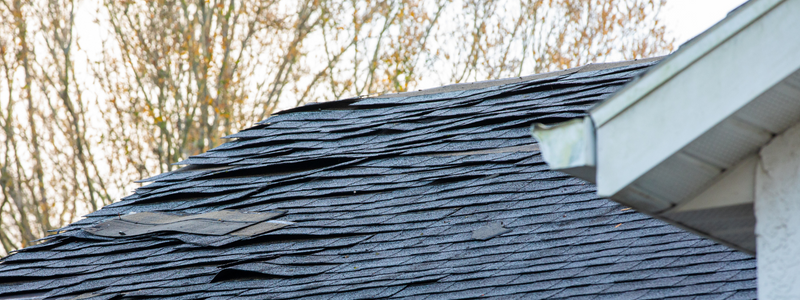
Seven Signs You Need Roof Replacement on Your Colorado Property
Fortunately, you often see a few key indicators that can serve as early warnings. Here are seven factors that reveal the need for roof replacement in Colorado:
Weathered Roof Joints and Junctions
If your building has a sloped roof, it likely has some weak points in the joints and junctions. As a result of harsh Colorado weather conditions – think rain, snow, and complete, direct sunshine–the joints may suffer from wear and tear. Weathering for an extended period causes the shingles to become brittle. In the case of a flat roof, leakage happens as a result of poor quality or cold concrete joints.
A Rattling or Noisy Roof
The material of the shingles makes a massive difference in how often you must replace them. It might also dictate whether your roof requires a minor repair or total roof replacement.
Furthermore, some materials may rattle from high winds; that vibration causes them to loosen in the wind. Additionally, the screws can loosen because of windy conditions, enlarging the holes little by little. Eventually, you may see leaks appear.
Missing or Broken Shingles
Often, your roof takes much physical damage, causing broken shingles. This damage is a visibly unattractive sight. Moreover, it often leads to unnecessary problems in the future if you do not have a roof replacement company fix it.
Are the edges of the shingles curled, cupped, or cracked? It could mean that your roof suffered the impacts of weathering. Constant exposure to sun, wind, hail, and snow, creates bald spots where the granules on your shingles wear away. This erosion makes your home look older and untidy.
Water Seeping Into the Structure’s Interior
When you don’t address damaged shingles or joints, you run a risk that water may permeate the attic joists and ceiling. Here’s why.
Over time, any water that collects underneath the shingles will seep into the wood structures. As a result, the moisture may cause porous materials to warp, swell, or crack. It may even lead to wood rot. Eventually, this causes structural damage. You must not ignore the issue of loose or broken shingles for too long. Indeed, even a tiny crack can cause water to trickle inside.
Structural Shifting of the Building
The greater your structure’s age, the greater the chances the framework of your roof has sustained shock and stress. Modern roof shingles are durable, but they are not immune to the impacts of a building settling or minor, usually unnoticeable shifts or tremors under the earth’s surface. Although this is not a common factor for roof replacement in Colorado, it is something to keep in mind.
The Age Factor
Is your roof over 20 to 25 years old? That age range represents the typical useful life of a shingled roof. In this age range, a repair usually will not suffice. Age weakens the structure, as it faces the cumulative impact of all the above-listed factors. Even worse, these weaknesses multiply to cause large-scale damage over time.
Dark Streaks on the Shingles
Those darkened areas are not waterlogged; they host mold or mildew colonies.
Because your roof is constantly exposed to air and moisture, it is also prone to airborne algae that will create dark streaks on the shingles. Moss, mold, and mildew flourish on damp, low-sunlight spots on roof surfaces, especially in cool, shady, and moist conditions.
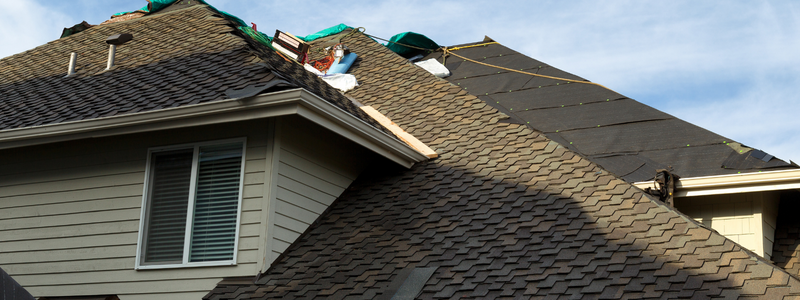
What Is the Best Time of the Year for Roof Replacement in Colorado?
You might wonder what season is best for roof replacement in Colorado. Warm, dry weather is optimal if you have the luxury of planning. However, emergencies often happen during the “off-season.” Of course, the professionals at B&M Roofing stand by to help their customers any time of the year.
Should You Stay Home or Leave During Roof Replacement in Colorado?
Another question you might have is this. Should I stay home during roof replacement?
Here are a few factors to consider:
- Noise levels: Roof replacement is inevitably noisy. If you want to stay home and relax, that’s one thing. But if you need to concentrate on work, you might find it hard to focus.
- Scope of work: You should plan to shut off your home comfort systems during a roof replacement; there is no reason to operate your heating or air conditioning – especially if your job requires sheathing replacement.
- Pets: Your pets might find the process stressful. Some homeowners find it best to board their pets at a pet daycare on roofing day to avoid the stress, noise, or even accidentally slipping outside.
- Safety: The final, and most important consideration, is the safety factor. The crew will walk across your roof, use tools and equipment, and perhaps even block your vehicle in the driveway.
Because of the many variables that cause disruption of a customer’s routine on a job site, many roof replacement specialists in Colorado would prefer you stay safely off the premises while they work.
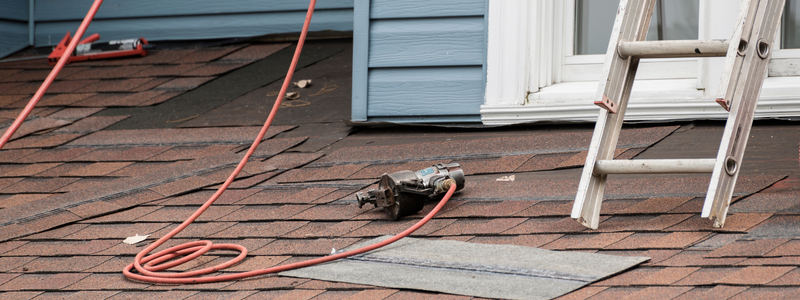
Cost Factors for Roof Replacement in Colorado
Now that you see the signs that indicate the need to replace your roof, you probably want to know the price tag that comes along with roof replacement in Colorado..
The total roof replacement cost in Colorado varies depending on various factors. Here are a few things that impact the cost:
- The desired roofing material: Do you want asphalt shingles or metal roofing?
- Does your home have structural damage: Has a water leak caused damage to the sheathing or joists?
- The size of your roof: An expansive commercial roofing job is far costlier than a residential roof replacement based on labor and materials costs.
Put your mind at ease about the investment in a new roof by contacting B&M Roofing for a free quote for your job. They are fully insured, licensed general contractors as required by Colorado law and will handle the entire job, from pulling the roof permit to leaving your home pristine when they leave.
You can request a free estimate from B&M Roofing here.
Choose B&M Roofing for Roof Replacement in Colorado
Partnering with an experienced team like B&M Roofing makes roof replacement in Colorado a good experience. We help residential and commercial property owners with roof replacement in Colorado in these locations:
- Denver
- Fort Collins
- Boulder
- Colorado Springs
- Greeley
Unsure if you are within our service area?
Use our contact form and our friendly staff will assist you.
Colorado Residential Roofing Contractors
Colorado residential roofing contractors strive to help homeowners create safer living conditions and preserve the value of their homes. A safe, leak-free, well-maintained roof is essential.
A residential roof lasts fifteen to twenty years, depending on the shingle quality. Eventually, there comes a time when you might start to see some signs of wear–and that’s when it is time to reach out to expert Colorado residential roofing contractors for a professional inspection.
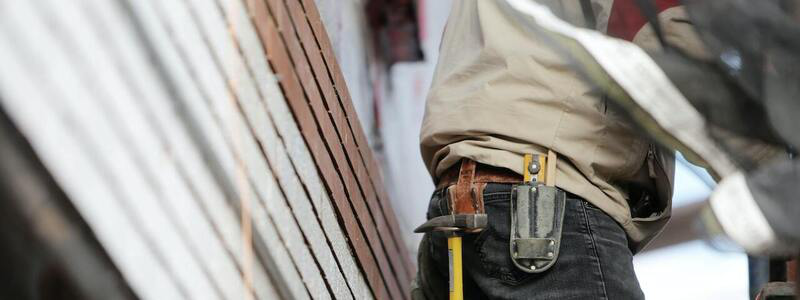
Colorado Residential Roofing Contractors Understand the Dangers of a Leaky Roof
You should address a leaky roof right away. Moisture in your home presents significant three significant dangers.
- First, as mentioned above, a humid, dark attic is a perfect breeding ground for mold and mildew. The spores can trigger asthma or other breathing problems. Mold will also continue to multiply, complicating matters even further.
- Secondly, wood is porous–your roof sheathing, studs, attic floor joists, and plywood will retain the water and rot relatively quickly. That weakens these structures. Eventually, you must replace not only the roof but also these.
- Third, moisture can seep into electrical systems, from light sockets to electrical outlets. We all know that water and electricity do not make good partners–enough said.
What Do Residential Roofing Contractors Do in Colorado?
Colorado residential roofing contractors can provide various services, including roof inspections or assessments, roofing repairs, and roof replacement.
Below, we will take a brief look at each of these services.
Roofing inspection:
If you have a leaky roof or suspect you have extensive wear on your shingles, it’s time to call in a pro.
An inspector will assess your roof, looking for these signs of wear and tear. Once they complete the inspection, they recommend the following steps–repair or replacement.
- Cracked or worn shingles: The granules on your shingles can erode over time due to constant exposure to wind, snow, ice, and rain. The freezing and thawing of ice pose a particular threat to roofs in Colorado. These bare spots on the shingles will become cracks over time. Eventually, that weak point will cause leaks.
- Missing shingles: If you have places where shingles are gone altogether, you are at risk for other headaches–like mold or mildew accumulating in your attic.
- Curled shingles: Shingles can lift and curl due to the elements, opening a gap that allows moisture to seep into your home.
- A look inside your attic: The best Colorado residential roofing contractors will take the inspection and look inside your attic. They will note any wet insulation, moldy spots, stained roof sheathing, or other signs of moisture or leaks.
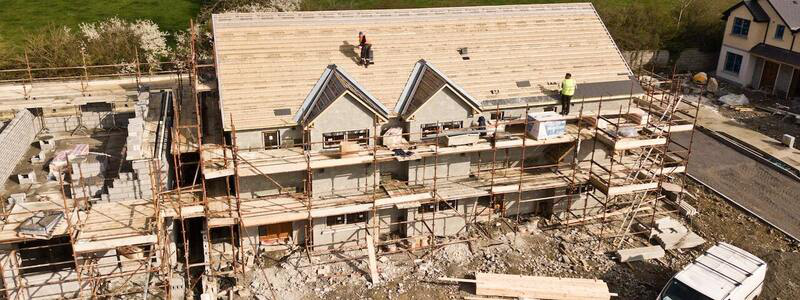
Roofing repairs:
If you notice shingle wear and tear early enough, a roofing repair may be possible. This process involves removing all damaged shingles and replacing them with new paper and shingles.
Roof repairs are often necessary due to unexpected circumstances–a blustery storm rips the shingles away or blows a tree over onto the home. These disasters feel overwhelming, but roof repair is possible without catastrophic damage.
Quality roofing repair will look seamless, matching the existing shingles well. It also makes your home safe again for you and your family.
Roof replacement:
A total roof replacement by your local Colorado residential roofing contractors is often the best solution to ensure your home is dry and safe.
The roofing crew will remove the old roof and paper. They will also inspect the roof sheathing to ensure it retains its integrity–and switch out any of the underlying wood that might need it.
An experienced and reputable roofing company might also suggest upgrades or improvements to the airflow of your attic. Heat buildup in the summer can shorten a roof’s lifespan. Conversely, poor airflow can cause ice dams during the winter. Now is the time to make that upgrade so that you will enjoy the replacement roof for a long time.
Finally, they attach new roofing paper and shingles. Professionals will leave your yard clean and your home safe–and your roof all set for many more years.
Why You Should Use Residential Roofing Contractors
Roofing is not a DIY or weekend project. Your roof is a critical structure that protects your safety and your investment. Furthermore, roofing is a dangerous job.
Residential and commercial roofing contractors have extensive knowledge of replacing your roof and the safety protocols.
Getting on top of a roof presents several hazards:
- Slip and fall off the roof, which increases with steeper pitches
- Ladders that can tip over, causing injury to a homeowner
- Minor injuries like scrapes and cuts
- Dehydration–shingles soak in the sun’s rays and retain the heat.
Roof inspection, replacement, or repair is a strenuous, dangerous job. It is a task that you should leave to professionals.
Are Colorado Residential Roofing Contractors Licensed?
Colorado does not mandate roofing licenses; instead, they fall under the same licensing guidelines as general contractors. Furthermore, they must carry a business license issued by their municipality or local governing authority.
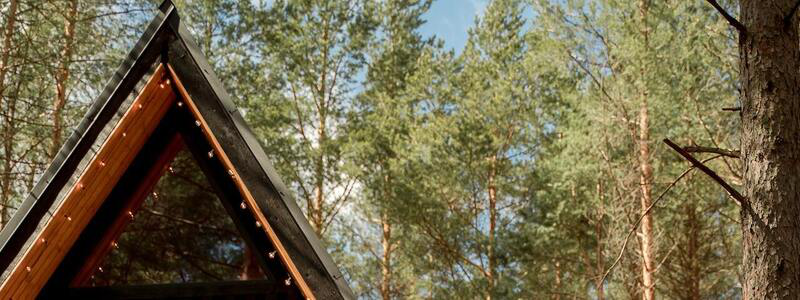
Choosing the Best Colorado Residential Roofing Contractor
It can be overwhelming to weigh all the options when it’s time to choose a contractor. Many companies claim to do excellent work, but how do you choose a residential roof contractor who is the real deal?
Here are some questions to ask when interviewing a Colorado residential roofing contractor:
- Does the contractor carry the business license, as required?
- Is the contractor fully insured for liability and workers’ compensation?
- Does the contractor guarantee the work for quality and durability?
- Do they work with a shingle brand that carries a warranty?
- Are the employees properly trained?
- What safety measures will the employees take while on the job?
- Can the contractor provide references? (Hint: Call the people!)
The Takeaway: B&M Roofing Is the Best Colorado Roofing Contractor Team
B&M Roofing takes pride in the quality of our materials and our employees’ extensive knowledge and experience. We take pride in upholding the most modern standards and will treat your home as our own.
We help residential homeowners and commercial locations with their roofing needs in these communities:
- Colorado Springs
- Denver
- Fort Collins
- Boulder
- Greeley
Not sure if we come to your area? We invite you to send an inquiry to our contact page ; we are here to help you.
Questions to Ask a Roofing Contractor
Your rooftop is so very important. It offers the best protection from the various elements and provides overall security for your home. When your roof becomes unable to function to its fullest potential, it can begin a domino effect which spreads problems all around your home. Homeowners will only replace their roofs once or twice in their lives. This is exactly why it is ever so essential to hire a roofing contractor with merit who will conduct any replacements or repairs needed. Much like with job interviews or getting a car repaired, there are crucial questions you should be asking your roofing contractor. But what are questions to ask a roofing contractor?
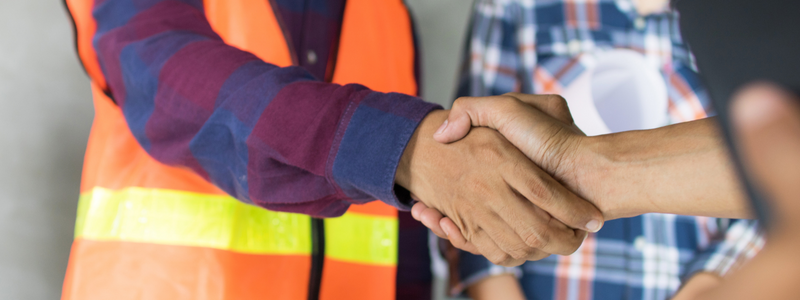
Don’t stress when asking questions.
The fact of the matter is any legitimate roofing contractor will address any inquiry you present.
Never feel like you’re posing too many questions. The right roofing contractor will answer any and all questions to help feel at ease.
You want to choose a roofing contractor who is transparent with their business and crucial that they do a professional job.
Here are some questions to ask a roofing contractor to help choose the best contractor for you.
What Should I Know Before Replacing My Roof?
By no means do you need to know everything about roofing, but knowing some of the right things to ask will help you determine the right contractor for you.
- Talk to your contractor about materials for your roof and which would be best.
- You should establish expectations with your contractor and feel comfortable with communication with your contractor throughout the process.
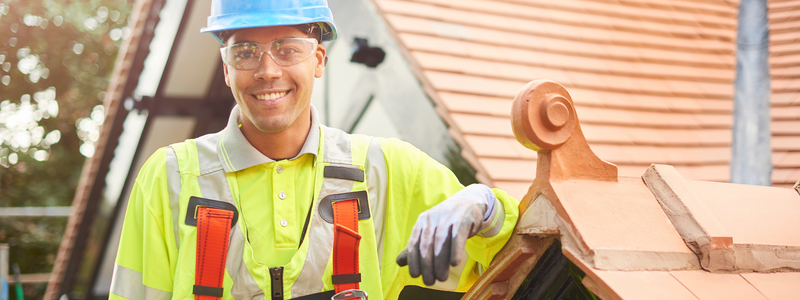
Questions You Should Ask Before Hiring a Roofing Contractor
Here are some great questions to ask a roofing contractor to ensure your safety as well as theirs:
What is your full company name and physical address?
If a roofing company lacks a physical location this is a bit of a red flag. Select a company who is licensed.
Do you have the appropriate license to do the work?
Have your roofing contractor provide their license information for their location and the name of the license holder.
Having a business license doesn’t equal a roofing contractor license. A business license provides the company’s identity and tax code. This doesn’t provide qualifications for working as a contractor.
Can you tell me about your insurance?
A reliable roofing contractor will have liability and workers’ compensation insurance which provides the homeowner with protection in case of accidents.
The workers’ compensation will provide protection in case of a contractor’s injury. Liability covers any damage caused by the roofers during replacement or repair.
Do you offer a warranty?
Note: there are two separate warranties associated with roofing; a manufacturer’s warranty and a roofer’s warranty. A manufacturer’s warranty covers the roofing materials while a roofer’s warranty covers the work done. A roofer’s warranty usually lasts a year or so, though some contractors offer longer warranties.
How long have you been in business?
Simply put: the longer a roofing company has been around, the better. It is a great way to get a bigger picture for a company as a whole.
The roofing company will be able to provide examples of past work as well as positive reviews they have gotten along the way.
Do you provide written estimates?
You don’t want to be surprised by the bill in the end. Your contractor should present you with a written estimate which states cost of materials, labor, etc.
Do you use roofing subcontractors?
If a roofing company doesn’t involve its own workers for the job, there will be no assurance that the workers will be as skilled or will have the license/insurance needed to do the job.
When a company uses subcontractors, make sure these subcontractors have insurance and the licenses to complete the work.
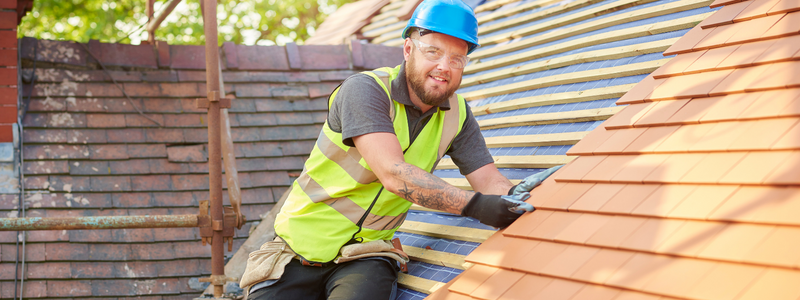
What do you do to ensure the project is on time?
Things happen and snags do get in the way sometimes. Your roofing contractor should be able to provide a backup plan which addresses potential obstacles which would extend the job duration.
How will you protect my lawn and property during this project?
Your lawn/exterior of your home should end up looking the way it did before any work set place. Ask your contractor what they do to make sure your lawn doesn’t get messed up. For example, some contractors will set up one path in which they can only walk through.
What do you do with the old material?
Replacing a roof is only half of the job. Removal of the various roofing debris is also something you should get informed with because the very last thing you’ll want after the process is a junk pile in your yard.
Make sure to ask your roofing contractor what they do to ensure that all the junk gets properly disposed of. Most roofing companies will bring along some sort of dumpster to dispose of any junk so you don’t have to mess it.
Though unfortunate, some roofing companies use sales tactics which produce less than professional quality of roof repair/replacement.
Informing yourself on how to properly choose a roofing company, you can ensure yourself that a successful installation of your residential roof repair or replacement, or commercial roofing will be met.
By knowing these questions to ask a roofing contractor, you will know before any work takes place, that you are in the right hands.
Roofing Tips for Homeowners
According to research, at least 64% of Americans own real estate, and homeownership rates have increased by 65% since the 1940s in the US. This means that more and more people are recognizing the benefits of owning their own homes. Owning a home is one of the most significant investments anyone can ever make in their lives, and maintaining your home should be your number one priority. The roof, in particular, should take precedence because if left unattended, a faulty rooftop could lead to big problems in the future. To avoid unnecessary repairs and replacements, maintain it constantly by cleaning, removing debris, and even replacing any areas that may have damage. Roof maintenance doesn’t have to be as difficult as you think. You could use a professional or do this part yourself. Armed with the below easy-to-follow roofing tips for homeowners, you won’t have to take too much time out of your busy schedule to ensure that your roof is in the best condition possible.
How To Maintain Your Roof
Routine maintenance on your roof is one of the biggest roofing tips we have for homeowners.
Roofs can last for decades, but their lifespan depends on how you properly care for them. Regardless of the type of roof you have, there are several areas that you need to take care of to maintain your roof, such as; the paint, gutters, and more.
Here are a few roof maintenance tips:
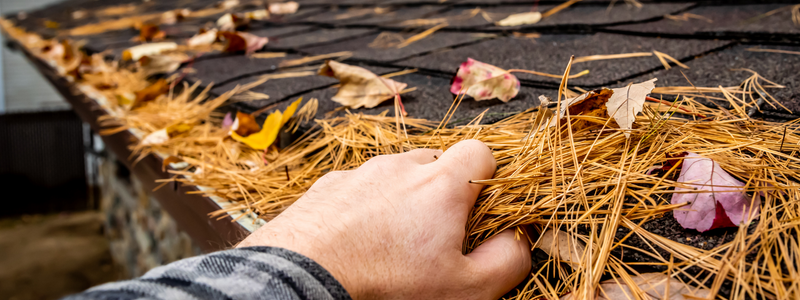
Clearing Your Gutters
You should clear your gutters to keep them free of debris. Blocked gutters can cause rainwater to accumulate on the roof, eventually leading to rust and rot. Therefore, it is essential to clean your gutters, preferably once every season, routinely, to avoid structural damage.
However, during the fall season, you should clean your gutters at least twice, especially if you live in an area surrounded by trees.
Trim Trees Found Near The Roof
It is best to trim all overlying branches found near your roof. Low-hanging components can cause significant damage, especially during storms, since they can fall on the roof. Additionally, they can scrap your shingles repeatedly and scratch away your roof’s outer protective layer.
To avoid severe damage to the tree itself, remove only low-hanging branches found within six feet of your roof.
Inspect Your Shingles Every Season
You should regularly inspect your shingles to check for any signs of damage. Damaged shingles cannot protect your roof against moisture, and you should always look for signs of damage or excessive wear and tear.
If you see any cracks, leaks, or broken shingles, you can contact a roofing company to do a replacement.
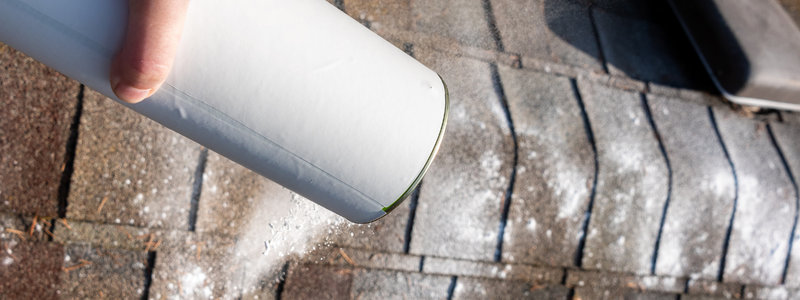
Regularly Check For Moss
The presence of moss on your roof can be hazardous as it grows and spreads, causing your shingles to lift. You should regularly check for moss or lichen growth on your roof to prevent this.
The hot seasons are awful for moss and algae, as they are known to grow under shady areas of your roof. When caught early, you can scrub and scrape them away, and once dry, you can apply preventative products that contain copper and zinc.
Remove Icicles And Ice Dams
If you’re experiencing winter or live in an area with constant snowstorms, you should remove icicles and ice dams that form on your roof. Leaving them unattended can cause your gutters to get loose due to excessive weight.
Check Your Attic’s Ventilation
Most people don’t realize that the ventilation in your attic plays a crucial part in your roofing system. Lack of proper ventilation leads to heat damage during summer. During winter, snow and ice accumulation will begin melting at the lowest layer, causing the water to refreeze around the shingles.
To check whether your attic is adequately ventilated, check for the formation of mold or ice dams.
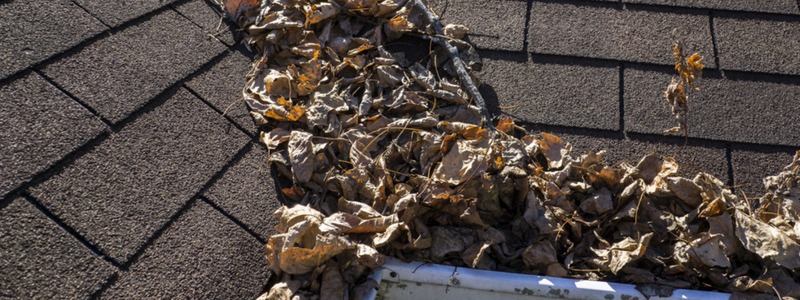
Why Should You Maintain Your Roof Regularly?
Roofs are considered the most overlooked home structures, and people pay attention only when damaged. However, like any other part of your house, the top needs regular maintenance. Here are a few reasons why regular roof maintenance is considered necessary:
It Extends Your Roof’s Lifespan
Roofs are known to last long, but when maintained regularly, they can last even longer. Timely roof maintenance can help prolong the life span of your roof. This, in turn, minimizes future or unexpected costs caused by roof damage, such as repairs and new roof installations.
It Keeps Your Family Safe
A roof stands between you and your family and harsh weather. It is essential to properly maintain your roof to protect your family from dangers such as falling tree branches, Colorado weather events, or excess moisture, which can lead to the accumulation of mold that can cause serious health concerns.
Helps Maintain Your Home’s Aesthetic Value
Not only does a well-maintained roof look better, but it also helps boost your home’s value. When you decide to sell your house, a well-maintained roof makes your house more valuable as a buyer can trust its protective ability and quality.
On the other hand, allowing roof damage to thrive for a long time will cause structural damage to your property, lowering its value.
Professional Maintenance vs. DIY Maintenance
Choosing between professional or DIY maintenance depends on you. However, you must determine which tasks you can do yourself and which ones you must leave to the professionals.
Opting to have a professional roofing company do your inspection, repair and maintenance is preferred as roofing professionals can adequately assess your roof’s condition and repair or maintain it using state-of-the-art products that will ensure its longevity.
If you decide to do your own maintenance, you should have the proper equipment, such as ladders, paints, etc., and safety gear.
B&M Roofing For All Your Roofing Tips And Needs
B&M Roofing is a dedicated roofing company in Colorado, offering expert care and services to commercial and residential products. Whether you are looking for a new roof for your office or home, or if you are trying to decide whether you need a new roof, we are equipped to handle any roofing job, and with our extensive roofing knowledge, you are assured of the best.
We handle the following industries:
- Commercial
- Residential
- Architectural Sheet Metal
- Quality Roofing Service And Repair
- Emergency Roof Repair
Please, contact us today for these and more services that we offer – even if it’s just more roofing tips for homeowners like you!
Roof Replacement: What to Expect
When it comes to your roof, you want to be sure it’s in good condition. After all, a leaky or damaged roof can lead to severe problems. However, when it comes time for a roof replacement, you might wonder what to expect. Here are some answers on roof replacement and what to expect.
Roof Replacement: What are Some Significant Causes of a Roof Replacement?
You may need to replace your roof if the material is damaged by weather, age, or improper installation. For example:
- Weather, such as hail or wind-driven rain, damages the roofing material.
- The roofing materials are damaged by fire or other natural disasters.
- The roofing materials are vandalized and need to be replaced due to holes caused by throwing things at the house (e.g., rocks).
Roofs can also be damaged in other ways, such as storm damage. For example, suppose a storm damages one side of your home worse than another. In that case, it could mean you have a structural problem worth consulting a professional.
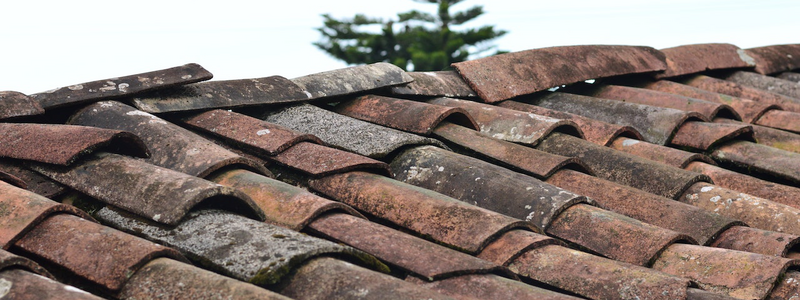
The Advantages of Getting a Roof Replacement
If you’re thinking about getting a roof replacement, here are some of the most significant advantages you can expect:
- A new roof will increase your home’s attractiveness, functionality, and value.
- It will save you money on heating and cooling costs.
- It will keep your family safe from leaks and other problems.
- It will help you sell your home faster.
- A new roof makes for a more comfortable living environment for everyone in the house—especially if it’s energy efficient!
Roof Replacement vs. Roof Repair
It’s essential to know the difference between roof replacement and roof repair. Roof replacement is complete removal of the old roof, including the decking and underlayment, and the installation of a new roof. Roof repair is fixing damaged areas of the top, such as a leaky pipe or damaged shingles.
If you have any doubt about which option will be best for your needs—and budget—it’s best to consult with your local contractor before making any final decisions.
Roof Replacement: What to Expect F.A.Q.s
How long does it take to replace a roof?
The time it takes to replace a roof varies depending on the size of your roof, its complexity, weather conditions, and your contractor’s experience.
If you have a small home with an uncomplicated roof, you can expect it to be replaced in one day. However, larger houses with complex roofs may take several days to complete. In addition, if it rains during the installation process, it may take longer than expected due to delays caused by rain or other unfavorable weather conditions.
Your contractor should plan for this possibility by ordering enough material, so they aren’t caught short when unexpected delays occur due to bad weather or other factors outside their control (like an accident on their way back from purchasing supplies).
How long does it take?
While it’s difficult to give an exact time frame for a roof replacement, the process can take anywhere from one week to one month. The roof size will significantly impact how long your project will take. Small roofs may require about one week; larger roofs may take as long as four weeks or more, depending on how many workers are working and whether or not they need extra equipment, such as cranes and scaffolding.
In addition to removing the old shingles, installing new ones on top of each other, and cleaning up after yourself when you’re done (or hiring someone else to do it), several factors can affect how long this process takes, including weather conditions.
Rainy days can slow installation if workers have limited access to certain parts of your property or have difficulty getting materials onto your roof (for example). Suppose it’s windy enough for high wind warnings in your area. In that case, you should expect delays due to safety concerns with workers installing new shingles being blown off balance by gusts coming off nearby buildings/trees, etc.
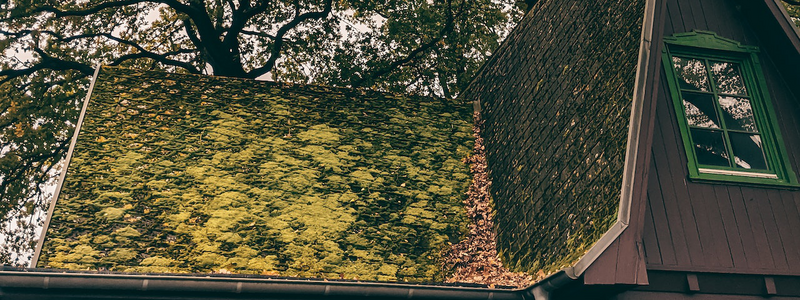
What type of roofing material should I use?
When it comes to roofing materials, you can choose from various options. For example, a shingle roof is one of North America’s most popular types of roof. Most homes have this type of roof because they’re easy to install and relatively affordable. Shingle roofs come in several styles that you can choose based on your personal preferences or budget.
Another popular choice for homeowners is tile roofs, made from ceramic or clay tiles attached to the surface using mortar or adhesive cement.
The main advantage of tile roofs is their longevity—they last longer than other types of materials due to high resistance against sunlight damage such as ultraviolet rays and wind erosion over time (it should be noted, however, that they may require more maintenance).
Wood shake shingles are another option if you want something less expensive but still attractive; these come with varying degrees of slope depending on where your house is located since some areas need more protection from heavy rainfall than others do (for example, coastal areas tend towards steeper slopes whereas that further inland tends towards flatter ones).
Do I need to do my entire roof at once?
You may have heard that it’s better to replace a roof in one fell swoop so that there are no home areas vulnerable to water damage. However, suppose your house is old and has been through many storms. In that case, you may want to consider replacing only those damaged portions of your shingles instead of going through with an entire replacement. The same goes for roofs with cheap materials or ones that have seen a lot of salt wear over time–it would be better to replace those individual pieces rather than an entire layer of shingles at once.
Will my home be protected while the work is being done?
Once you’ve signed off on the scope of the project and your roofing contractor has begun to remove shingles, they will be careful to protect any surrounding property. In addition to ensuring that nothing is damaged, this also provides an extra layer of protection. For instance, if a nail falls from your roof during replacement, it should land in a protected area instead of damaging your lawn or windowsill.
The crew should also cover all furniture on the ground with tarps or sheets so that rain doesn’t get onto it during the job. Once they are finished with the job, they will ensure that any furniture is removed before removing those tarps or sheets themselves.
What will the crews do each day?
The crew will start by removing the old roofing material, including the nails and other fasteners. Then, the workers will install the new roofing material, using nails or screws to secure it.
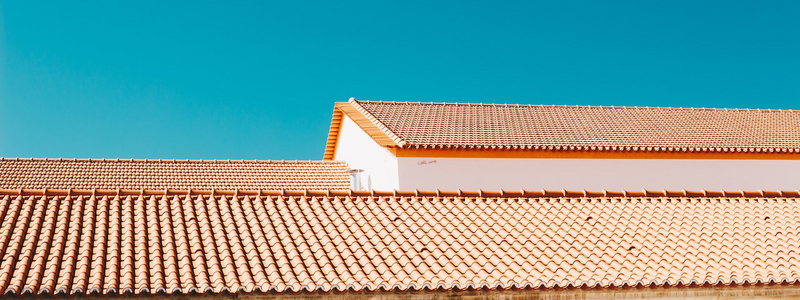
Do I need to board my pets during the replacement?
If you have dogs or larger outdoor animals that don’t do well inside, it may be best to board them or allow a friend to care for them for the project’s duration. This ensures our team can access building materials and the front and back of the house.
Will I need to prepare my yard or parking?
If you have a driveway/ garage, parking on the street so the roofing materials supplier can drop them off as close to the house as possible is best practice. It’s common for our roofing team to utilize driveways during installation.
While you may want to keep the car in the garage, if teams work over an uninsulated space, you may need to get debris on your vehicle.
Replacing your roof is a big job, but it won’t be such a hassle with the right company.
Many things can make or break a home improvement project like this. A reputable contractor will handle everything from start to finish so that you don’t have to worry about anything but enjoy your new house once they’ve finished what’s needed to do the job right. They’ll take care of everything from removing old materials (and disposal) before installing brand-new ones for maximum energy efficiency and long-term protection against weather damage, leaks, or other problems associated with older roofs on homes like yours!
Roof Installation: What You Can Expect
Roof replacement is a big decision, but it doesn’t have to be scary. The critical thing to remember is that this is your home, and you should always do what’s best for it. If you know the roof needs replacing, there’s no reason not to get a new one!
B&M Roofing Colorado: Roof Replacement & What to Expect
B&M Roofing provides quality roofing services and repairs to residential roofs to more complicated commercial properties throughout Colorado and its surrounding areas.
Our roofing service and repair specialties include:
- Roof Analysis
- Roof repairs on any system
- Leak identification
- Gutter, Downspout Repair, or Replacement
- Coating Services
- Tenant Improvements
- Preventative Maintenance
- Scheduled Maintenance Services
- Skylight Replacement
B&M Roofing is proud of and confident in the quality of our service work and the commitment of our craftspeople.
We look forward to building new relationships and forging new partnerships as we continue to grow.
If you’re still unsure how to go about your roofing problem, schedule a free inspection with us today.
How Long Does a Roof Inspection Take?
Your roof is one of the most important parts of your home. It protects you from the things mother nature likes to throw at it. Being regularly bombarded by elements, your home’s rooftop is in a constant flux of degeneration. In the case that your roof is unable to function properly, it can become the beginning of all sorts of damage which can spread all around your home. As Colorado’s weather can be especially brutal on your roof, roof inspections become crucial for those with concerns of high winds, hail, or snow. With damage not always being immediately evident, your rooftop may not show signs of damage until they have become dangerous and much less wallet friendly. A roof inspection assures you a peace-of-mind by potentially catching a problem early and not getting caught by any underlying issues. But just how long does a roof inspection take, exactly?
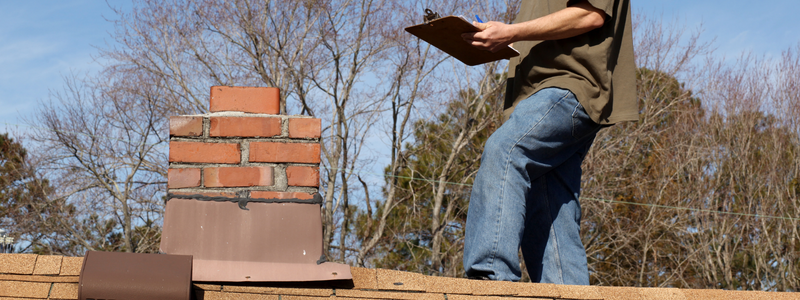
What is a Roof Inspection?
A rooftop inspection is a detailed assessment of your home’s roof by a roofing professional.
By using a range of equipment, they will inspect the roof and if they find any places of concern you and a professional can decide the next steps to take.
Why Are Roof Inspections Important?
Like maintaining your car, lawn, garden, or your health; having someone inspect your roof can help determine its overall condition (and potentially save you more stress and money in the long run).
Unfortunately, roofing problems don’t always appear as a giant leaky hole in your ceiling. Often, your roof’s problems will be much less noticeable (leaks and various insulation issues).
Colorado weather can be intense and unpredictable. With downpours of rain, wind, hail, and snow; Colorado’s weather has a large effect on the durability and quality of your rooftop.
To keep these elements from affecting your roof’s reliability, Roof inspections are critical for guaranteeing that your rooftop is managed and doesn’t develop these or other issues.
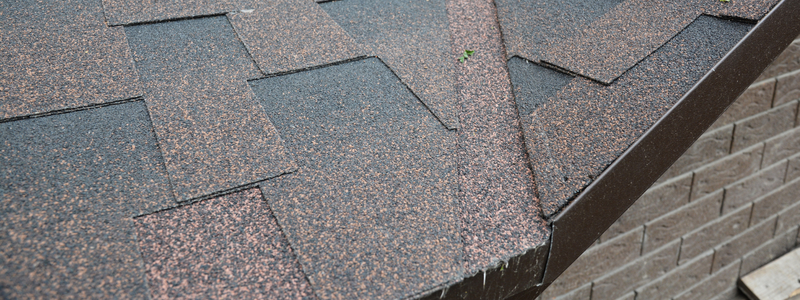
When Should You Get A Roof Inspection?
- Fall and Spring are the safest and easiest seasons to have your roof inspected, especially in Colorado, due to the comparatively mild weather and safer weather conditions.
- The National Roofing Contractors Association recommends having your roof inspected one during Fall and once during Spring.
- The National Roofing Contractors Association also recommends having your roof inspected after any significant weather event.
How Long Will a Roof Inspection Take?
Depending on the size of your home, the roof inspection itself should only take between 45-60 minutes.
However, various factors can make the process a little longer.
These factors include:
- The Kind of Roof You Have: There are many roof designs and each design takes a different length of time to inspect.
- The Square Footage Of Your Home: Larger homes will naturally take longer to properly inspect.
- Accessibility Of Your Roof: Some areas of your roof may be more difficult to access than others.
What Is Checked During A Roof Inspection?
Your roof inspection shouldn’t be a disruptive experience.
The inspector is only looking around for signs of a potential issue. Nothing more than a ladder being placed against the house and footsteps are typically all you will experience.
During the roof inspection, our roofing professional will conduct a checklist:
Surface Assessment
Discoloration or warping is looked for since this can be a sign of water damage.
Hail damage can be hard to locate so hail-strike damage is assessed.
Ventilation
Airflow in your attic is extremely important and professionals can determine whether your vents are working to the standard your home requires.
Structural survey
It is important to get past the superficial damage and expose any structural weakness your roof may be experiencing. Promptly identifying these kinds of problems and approaching the issues are essential for home maintenance.
Insurance Claims
In the event of your roof being damaged, a professional will be needed to properly describe and itemize any damage.
A professional will be your guide through the process of an insurance claim.
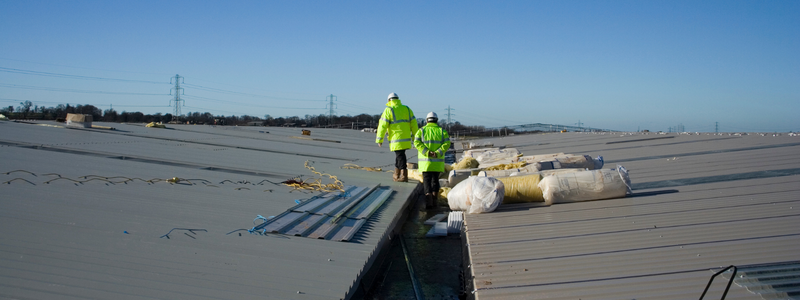
B&M Roofing: Colorado’s Professional Roof Inspectors
B&M Roofing of Colorado provides free, no-obligation professional roof inspections to homeowners in Denver and Boulder.
As Colorado residents, we know the weather and elements can have an effect on your roof. Being able to spot old, weathered, or damaged roofs is our speciality.
If during a roof inspection; we find that we can save you money, we absolutely will.
If you need repairs after an inspection, we will absolutely say so.
On the flip side, if you DON’T need any repairs at all, we will absolutely say so.
It’s about protecting you and your home…AND your wallet.
Request a visit from our inspection team with our online form, or by calling 303.443.5843.
How Long Does It Take To Replace A Roof?
As you sit; watching the pouring rain through your living room window and enjoy the bountiful protection your household provides your family and yourself from Mother Nature’s fury, you are overwhelmed with gratitude for the comfort that having a rooftop overhead provides.
Yet, as lovely as Colorado truly is, that fury and mixture of forces are always ready to bang at your doorstep. But your rooftop gets the brunt of that.
Considering the need for a strong rooftop as fundamental for keeping everyone safe, you notice the roof looking a bit old/worn (cracks, leaks/water damage). Maybe it’s that time you finally replace your roof. After all, nothing lasts forever; much less your roof.
Most homeowners can enjoy an average of 30+ years and upwards to 50 years in the case of a solid roof job.
But you are definitely thinking it’s time to replace. Replacing your rooftop companion can seem (in theory) like a huge bothersome task and how long does it take to replace a roof exactly?
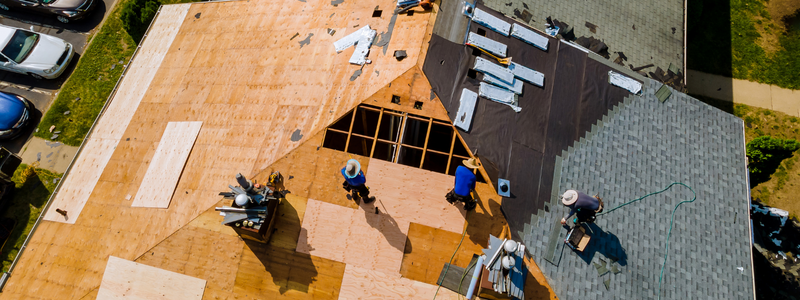
Situations Which Require A Roof Replacement
So what are some situations which may lead to you needing a roof replacement?
Shingles Missing/Curling
Asphalt shingles have a long lifetime (roughly, 20-50 years) but when they go downhill, they tend to curl up which permits water to saturate into the space underneath.
In the event that there is excessive curling or the roof is missing shingles, then a roofing replacement may be required rather than a minor fix.
Damaged Flashing
Flashings are the thin metal strips that lie along the joints of your roof. These can become worn/damaged in the long run, which can prompt leaks in your roof.
If you notice that you have damaged flashings, that is an indication your rooftop may need to be replaced.
Discolored Walls or Ceilings
If you notice signs of water stains and discoloration of your walls or roofs, this is very nearly a guarantee that there is a significant issue with your rooftop.
The Roof Is Just Plain Old
In the event that you have an old rooftop that is on the older end of 25-50 years of age, it might be wise to have a roofing professional determine whether or not it needs to be replaced.
The age range is a big deal because your rooftop’s normal life expectancy will change contingent upon the materials utilized and where you reside.
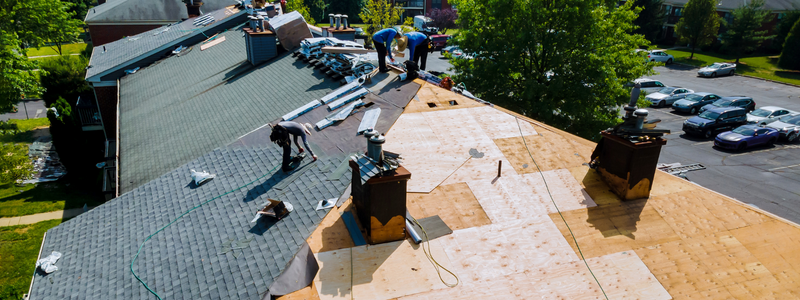
So, How Long Does A Roof Replacement Take?
Typically, you can expect a roof replacement to take about 3-4 days tops. However, there are a few factors that weigh into how long it takes to replace a roof.
These are the factors in determining the length of any roof replacement.
- Home Size – It’s really no secret that if you have a larger home, the process of replacing your roof becomes a bit longer. In some cases, larger home roof replacements can take a few days. Smaller houses can have rooftops replaced within the day with good weather conditions.
- Weather – Plan a roof replacement project around the weather. Colder weather months and stormy seasons could delay the roof replacement. Try to avoid replacing your rooftop when you anticipate downpour, snow, or incredibly hot/cold temperatures. When weather conditions aren’t cooperating, roof replacement time becomes much longer than what is typical.
- Rooftop Accessibility – The ability for a contractor to access your roof is big in calculating the amount of time it requires to replace your rooftop. For example: if your rooftop is surrounded by shrubs. landscaping, or fences; it will be harder to access than a property without such barriers. Additionally, it may be harder to access your roof if you live on a road with thickly-packed groupings of houses.
- Roofing Materials and Design – Shingles come in a variety of materials. Every material requires a different frame of time or techniques used for installation.
- Asphalt Shingles – Asphalt shingles are the most popular roofing choice amongst homeowners. Asphalt is a composite material made from an accumulation of minerals. This makes for a very sturdy roofing material in all weather conditions. Asphalt shingles tend to have a lifespan of 15-25 years. They are also the most affordable, durable and easy to install. Installation is typically finished 1-2 days.
- Wooden Shingles – Wooden shingles are of the most aesthetically pleasing of the types of shingles. They tend to have a lifespan of 30 years and are known as more environmentally-friendly due to being biodegradable and coming from sustainable sources. Wooden shingles are more expensive than other materials. They are not recommended in areas known for strong storms. Wood is also highly flammable and prone to damage from insects such as termites. Installation is typically finished 2-5 days.
- Metal Shingles – Metal shingles are a highly durable and stylish choice for your roof. They tend to have a lifespan between 40-70 years. Metal roofing provides protection from the harshest weather thrown at it and a major resistance to fire. These shingles are amongst the most expensive and also require a bit of maintenance to prevent metal corrosion. Installation is typically finished 2-5 days.
- Slate Shingles – Since slate is made from stone, they are durable. They are not easily damaged by nature’s elements, though they can still crack. They are also fireproof and protect from high winds. Slate shingles are more expensive but tend to have a lifespan of up to 125+ years. Installation is typically finished 6-7 days.
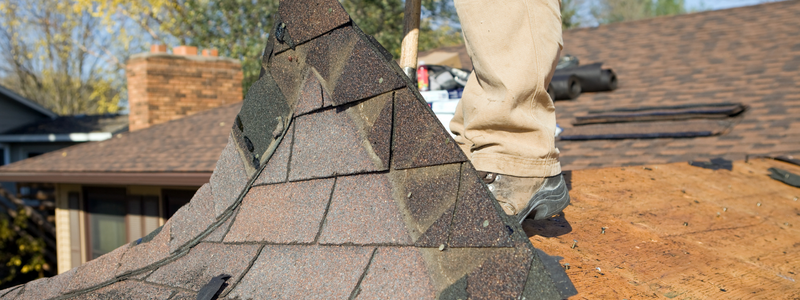
Ready for a Roof Replacement?
B&M Roofing provides quality roofing services and repair to residential roofs all the way to more complicated commercial properties throughout the state of Colorado and its surrounding areas.
Our roofing service and repair specialties include:
- Roof analysis
- Roof repairs on any system
- Leak identification
- Gutter, Downspout Repair or Replacement
- Coating Services
- Tenant Improvements
- Preventative Maintenance
- Scheduled Maintenance Services
- Skylight Replacement
B&M Roofing is proud of and confident in the quality of our service work and the commitment of our craftsmen. As we continue to grow, we look forward to building new relationships and forging new partnerships.
If you’re still unsure how to go about your roofing problem, schedule a free inspection with us today.
When Is The Best Time To Replace Your Roof?
Colorado’s crazy seasons can take a toll on your roof’s lifespan, so knowing when is the best time to replace your roof can be tricky.
However, the fall weather in Colorado is typically pretty mild, even though temperatures get a bit cooler. Leaves start to fall during this time of year, which means you’ll need to keep your gutters clear, but due to less harsh weather, fall is usually the best time to replace your roof in Colorado.
After the heat, rain, and hail of summertime and before the icy winter months, schedule a time for roof maintenance.
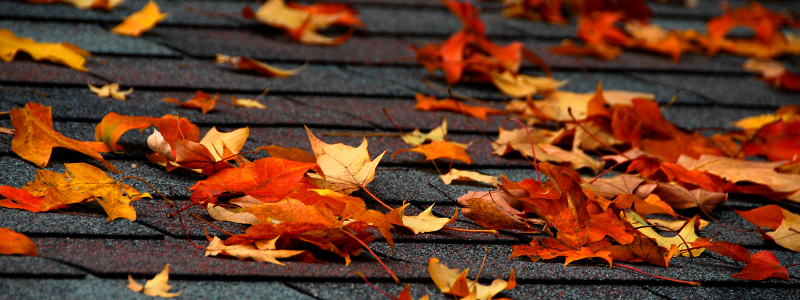
Fall Is the Best Time To Replace Your Roof
Fall is often considered the best time to replace a roof. This also means that roofers are very busy this season, and roofing materials are in high demand and can increase prices. The moderate temperatures mean that shingles can be laid and sealed without being affected by temperature extremes. If you are determined to install a roof in the fall, book early before the roofing contractor’s schedule fills up.
If you’re wondering when is the best time to replace your roof, here are the top reasons why you should do it during the fall.
- You should inspect your roof for breakage or any other damage after summer weather. Hail and heat can cause harm, so fall is the best time to determine if it needs to be replaced before colder weather hits. Call us to schedule an inspection for your roof to determine if you need a replacement.
- The temperatures aren’t too hot nor too cold. On a clear day between 45 and 50 degrees, asphalt shingles will melt and adhere appropriately to these conditions when replaced (a process called thermal sealing). Your roofers won’t have to work in excessive heat or cold, which makes it easier for them to put more time into the job.
- Your shingles need to be sealed before frigid cold temperatures hit. Shingles become more brittle as the air grows more chilly. A sealant protects them correctly from the snow and ice and ensures they won’t blow away with the winds before wintertime.
- You’ll save money on your winter bills. If your HVAC system is located in your house’s attic, replacing your roof will help it operate at its best. This way, you and your guests will stay warm all winter long without increased heating bills.
- It’s the prime time to patch holes and other issues that can worsen in cooler temperatures. Take care of essential maintenance now before it gets out of hand. You’ll want to avoid paying for more significant roofing problems in the future by taking care of them now.
What Is The Best Temperature To Replace a Roof?
Between 40 and 85 degrees F is considered the best temperature to replace a roof. However, suppose you install roof shingles in cold weather below these temperatures. In that case, the shingles may become brittle and more susceptible to breakage.
To avoid this, when working in sub-zero temperatures, store your materials in a warm place, above 50 F, until just before use. Also, be careful not to get wet your shingles, as they may break.
Working at these temperatures will provide the roofers with better working conditions and allow them to meet project schedules. In addition, the earlier you start work in the fall, the less likely you are to experience delays due to rain. Perfect temperatures with lower humidity and less rain will give your shingles the time they need to seal effectively before the snowy months.
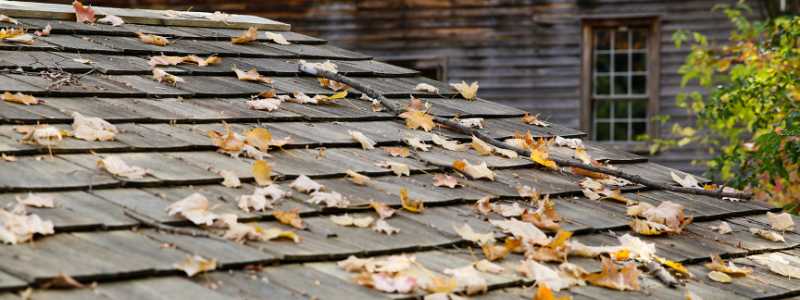
How Long Does It Take To Replace a Roof?
Besides asking when is the best time to change your roof, you should also ask yourself how long it takes, and there is no one-size-fits-all answer to determining how long it will take professionals to replace your roof. Typically, the roof of an average residence can be replaced within one day. In extreme cases, it could take three to five days, depending on the climate, complexity, and accessibility of your home. It could even take up to three weeks. But unless it’s a large house, a roof can usually be replaced in one day.
There are a few factors that will determine the time it takes to replace a roof in a house.
- The weather: If the roof is replaced during cold weather, additional time-consuming steps will be necessary.
- Roofing materials and design: Shingles come in different materials. Each material requires a different installation method and time.
- Overall house size: The more extensive your house, the longer it will take to replace the roof. Replacing the top on a small one-room cottage will be much faster than replacing the roof on a large estate.
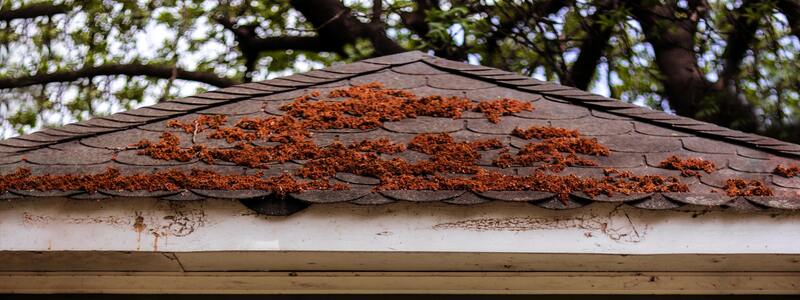
B&M Roofing Colorado’s Most Trusted
If you think it’s time to replace your roof, regardless of the size of your home, this is an important decision that you should not rush into. You need to make sure you choose the right roofing installation company, that the roof is installed correctly and that the weather cooperates during the replacement process.
For more information about roof maintenance, repair, or replacement. Call us at 303-816-0068 or fill out a contact form.
Roof Pitch Examples
The roof pitch of your home decides its lifespan, cost, and appearance. In Colorado, keeping your home safe from water, ice and snow is essential.
“Roof pitch” is sometimes referred to as “roof slope.” The term refers to the steepness of a roof measured as a rise in inches for every horizontal foot of length. An example is a 6/12 roof with a vertical height of six inches per horizontal foot. In this article, we will give you roof pitch examples and information for you to consider when making repairs.
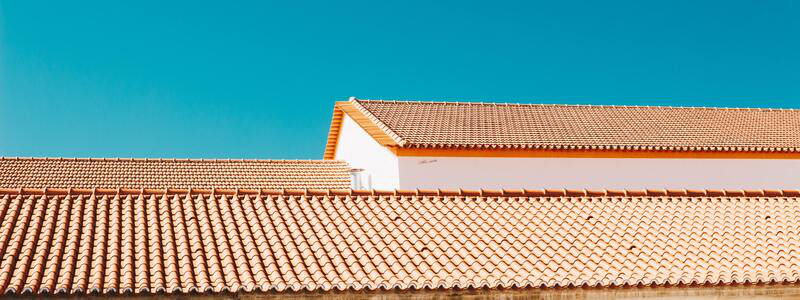
What Are The Most Common Types of Roof Pitch?
Different structures come with different types of roof pitch. It can never be assumed that the pitch of one home or business will work on all buildings. The pitch will also determine which materials can be withstood by the structure. Roofs with higher pitches work best with shingles, tiles, shakes, asphalt, or wood, while low-slope roofs allow for roll roofing with exposed nails. The following are the most common types of roof pitch examples:
Residential
Residential roofs usually have conventional sloped roofs, meaning the roof has a pitch between 4/12 and 9/12 on most homes. Roofs that have angles exceeding 9/12 are considered steep slope roofs.
Commercial and Industrial
Commercial buildings will typically have low slope roofs. These roofs have pitches between 2/12 and 4/12. Flat roofs have a low rise, most commonly found in industrial facilities such as factories and warehouses. Although, the minimum slope of a roof must be at least ¼” to ensure proper drainage.
Different Examples of a Pitch Roof
Roof pitches boil down to the architecture of the building and what it’s being used for. Typically, hip and gable roofs are most popular in homes and residential structures, whereas flat roofs are seen in commercial and residential buildings. Here are some roof pitch examples:
Hip Roof
A gable roof consists of two faces whose upper horizontal edges meet to form a triangular-shaped ridge. This is the most common type of roof used in residential areas, which makes for exceptional water drainage, reducing the risk of water buildup.
Gable Roof
Hip roofs are pitched roofs with more than two surfaces. Hips are the term that refers to the outer angles two tops create, which are usually more than 180 degrees. This roof pitch has all sides sloping downwards, meaning a hip roof has no gables.
Mansard Roof
Mansard roofs are commonly seen in French architecture and contain unique design elements such as windows and attics. Every four sides of a mansard roof have two pitches. Typically, the lower pitches are steeper than the upper pitches.
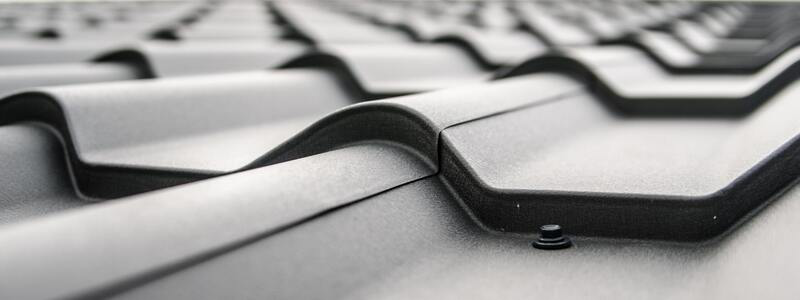
Flat roof
Flat roofs have a pitch of up to 10 degrees, which is the minimum slope a building needs for water to drain. As mentioned previously, flat roofs are mostly seen on industrial and commercial buildings. Still, they are also becoming popular in residential buildings such as townhome complexes, where they are converted into common areas such as patios and green spaces.
Mono-pitch roof
Mono-pitch roofs contain a single-pitched roof surface and only slant in a single direction. This type of roof pitch is usually seen in modern residential architecture. Mono-pitch roofs consist of rafters and beams to support roofing materials, and because there is only one flat surface – it’s easier to build.
Low vs. Conventional vs. Steep
When it comes to the steepness of your roof, there are three categories. These are:
Low-slope:
- 1/12 Roof Pitch
- 2/12 Roof Pitch
- 3/12 Roof Pitch
Conventional:
- 4/12 Roof Pitch
- 5/12 Roof Pitch
- 6/12 Roof Pitch
- 7/12 Roof Pitch
- 8/12 Roof Pitch
Steep Slope:
- 9/12 Roof Pitch
- 10/12 Roof Pitch
- 12/12 Roof Pitch
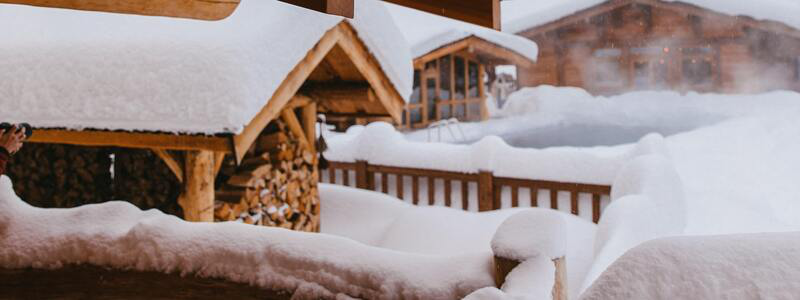
How Can I Tell What Pitch My Roof Is?
I very great way is to grab a tape measure and level. The level should be at least 12” long. Safely climb your roof and place the end of your level against the roof surface and hold the level straight until the bubble is centered. Then, measure the vertical distance down from the 12” mark on the level down to the roof using your tape measure.
Climbing your roof can be dangerous, and it’s essential to take safety precautions. Sometimes, it’s best to leave it to the experts to prevent accidents and injuries.
B&M Roofing – Colorado’s Most Trusted
B&M Roofing is Colorado’s most trusted and knowledgeable roofing company. We offer expert roof services and care for commercial and residential buildings across Colorado and nearby states. Our commitment to quality has been the B&M Roofing standard since 1947.
Contact us today for a free assessment if you’re looking for a new roof or need some repairs. Our team of experts can evaluate the right services for your roofing needs. Whether it’s a new roof installation or repair job, we promise to work until you are completely satisfied.
For more information about roof maintenance, repair, or replacement. Call us at 303-816-0068 or fill out a contact form.
